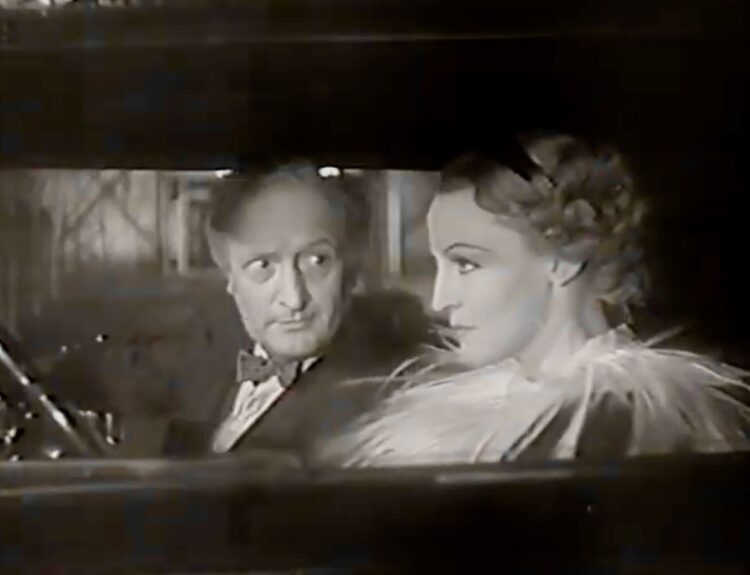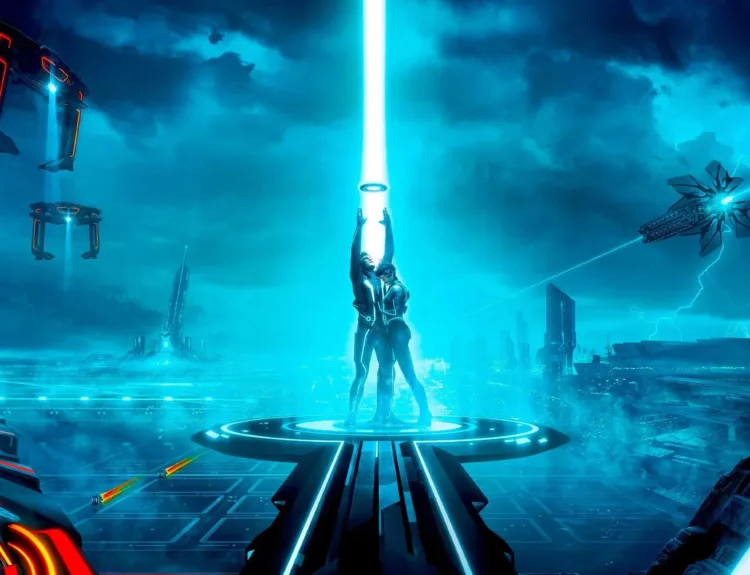Doctor Who has long been my favorite show, but it’s been a couple of years since I’ve actually watched anything but the newest episodes. Before that, I was making a respectable run at getting through the original series, most of which I haven’t seen for decades. For various reasons, it feels like time to get back into it.
Image of the Fendahl
Starring Tom Baker as the Fourth Doctor.
Companion: Louise Jameson as Leela. With a brief & unspoken appearances by K9
Written by Chris Boucher. Directed by George Spenton-Foster. Produced by Graham Williams. Script edited by Robert Holmes (and Anthony Read, uncredited).
Format: 4 episodes, each about 25 minutes long.
Originally Aired: October – November 1977 (episodes 9-12 of Season 15)
There were a lot of reasons I was looking forward to re-watching (and for some episodes, actually watching for the first time) Image of the Fendahl. It’s written by Chris Boucher, who wrote the classic The Robots of Death and the also-good The Face of Evil. It features Leela, one of my favorite companions. And though it wasn’t produced under the great Philip Hinchcliffe, it was still on the heels of his era, with script editor Robert Holmes still involved. Sadly though, I found the whole thing way more disappointing than I’d hoped.

Spoilers Ahead!
There are definitely some neat concepts at play here–the Fendahl is a gestalt entity made that feeds on life itself. It became such a threat that the Time Lords destroyed its home planet (turning it, we presume, into our solar system’s asteroid belt) and removed all traces of that world from their records. But the Fendahl (or a Fendahl, anyway, it’s not clear) survived in the form of a skull which reached earth and influenced human development so that in the present day it could re-manifest. Add into all that a cadre of sketchy scientists and a misguided coven of worshippers, and it really sounds like you have the makings of a great story.
Unfortunately, it’s all kind of undercooked. The ideas are more interesting to read about than to watch because the script itself barely gives time for anything to be explained, much less explored. Things just sort of happen all over the place, and in the some parts in particular, they lurch forward very haphazardly (the Doctor escapes being locked up off-screen, Martha Tyler encounters the Fendahl through a vision off-screen, Leela is either knocked unconscious or decides to take a nap on the TARDIS floor off-screen, etc). It’s like there’s a lot of fascinating lore here, but it hasn’t been developed into the strongest story, and so the major events lack the emotional punch they should have.
The serial almost makes up for this, though, in the arena of atmosphere.

There is an effective tone of horror and dread that hangs over everything. The settings are used well to add to this. The lab inside of the isolated priory, the creepy woods, the ritualistic set-up in the cellar, all of it helps to give the story a distinct macabre flavor. And the Fendahl itself adds to that.. The design of entity (both the “Core” and the monstrous Fendahleen) are given a lot of attention, and though they are limited by the effects of the day, they work well at representing some kind of eldritch nightmare.

But the script still fails, I believe, because of at least one critical mistake, and that is in not doing anything to develop the character of Thea Ransome and make her plight meaningful, or even understandable.

Thea, played by Wanda Ventham (Benedict Cumberbatch’s mother, who also played Sherlock’s mother in Sherlock), is a scientist studying the mysterious skull, who seems to randomly fall under its influence, leading her to occasionally activate the device which is accelerating its re-actualization, until she is kidnapped by the leader of the strange coven and turned into the Fendahl Core by means of a strange witchy ritual. So all that to say, she’s pretty important to what’s going on, and narratively is at the heart of all of the story’s horror.
It’s a shame then, that she is easily the flattest of the story’s main characters. It’s not Wanda Ventham’s fault–her performance is grounded and Thea comes across as a regular human being who happens to be a sensible and intelligent scientist. But as the story continues, nothing that happens to her is imbued with any meaning–being influenced by the skull, being captured by Stael, being turned into the Core, it all just sort of happens, with no particular emotional response. Thea isn’t lured by the skull’s power, she’s not horrified by it, she’s not filled with existential dread as she struggles to survive…anything would have been better. It’s like she’s treading water until all the business with the Fendahl can really get underway in part three.

Actually, this reflects an issue with all the scientist characters, although at least the rest of them get a personality trait or two (Adam is skeptical and sarcastic, Fendelmen is obsessed, Stael is cold and evil). But in general, though the story is centred around their research, nothing they do really matters until Stael decides it’s time to really go for it with their rituals. The scientist scenes provide some exposition, but otherwise are basically filler.
Faring a bit better is Martha Tyler and her grandson Jack. They are both brought to life through very broad performances, but at least they have meaningful contributions to the story all the way through its runtime. Jack gets a cute dynamic with Leela as well, including some fun action scenes.

He even gets a brief kiss on the cheek from Leela (apparently an ad-lib by Louise Jameson).
This brings us around to Leela and something I wanted to comment on. Leela, as I said above, is one of my favorite companion characters on Doctor Who–easily in the top 5. And she has some great moments in this story, with her mix of savagery and sweetness. But of course, it’s always been a little awkward to be a fan of her, with her leather jungle-girl outfit.

But, I’d also happily argue that Leela’s “eye-candy” status can be overstated. Sure, Louise Jameson looks great, but her outfit isn’t actually all that revealing or sexualised.
But, it turns out, that I am remembering Leela’s original outfit, and not the new, revised costume that she debuts in this story. In addition to being lighter colored, it’s also much tighter and revealing. I thought it was a really awkward design choice, much more distracting and far less flattering.

Maybe some of that is Leela’s hair, which she oddly wears up in this episode (due to a hairdressing cutting it shorter than she should have, the story goes), so we’ll see when I get to rewatching Underworld and The Invasion of Time, the two other stories that this outfit features in.
So all that to say, even though there are things that I liked about Image of the Fendahl, and even more things that I wanted to like, the poor parts ended up being as memorable as the good stuff.

Other thoughts:
• K9 is briefly in this story, having debuted in the previous one. But he doesn’t speak (the Doctor is affecting repairs on him at the start), and John Leeson isn’t in the cast.
• The Doctor and Leela briefly discuss how “alive” the TARDIS is. The Doctor says that “she” generates a low-intensity telepathic field. I don’t know if this idea had been mentioned in the series before?
• There is a cute scene near the start where the Doctor chats with the cows that are near the TARDIS when he and Leela first emerge, before he finally says, “You know, I don’t think these cows know anything about the time scanner.”
Movie News
Motivation
Anime Batch
Ekspedisi Papua
Jasa Import China
Berita Olahraga



